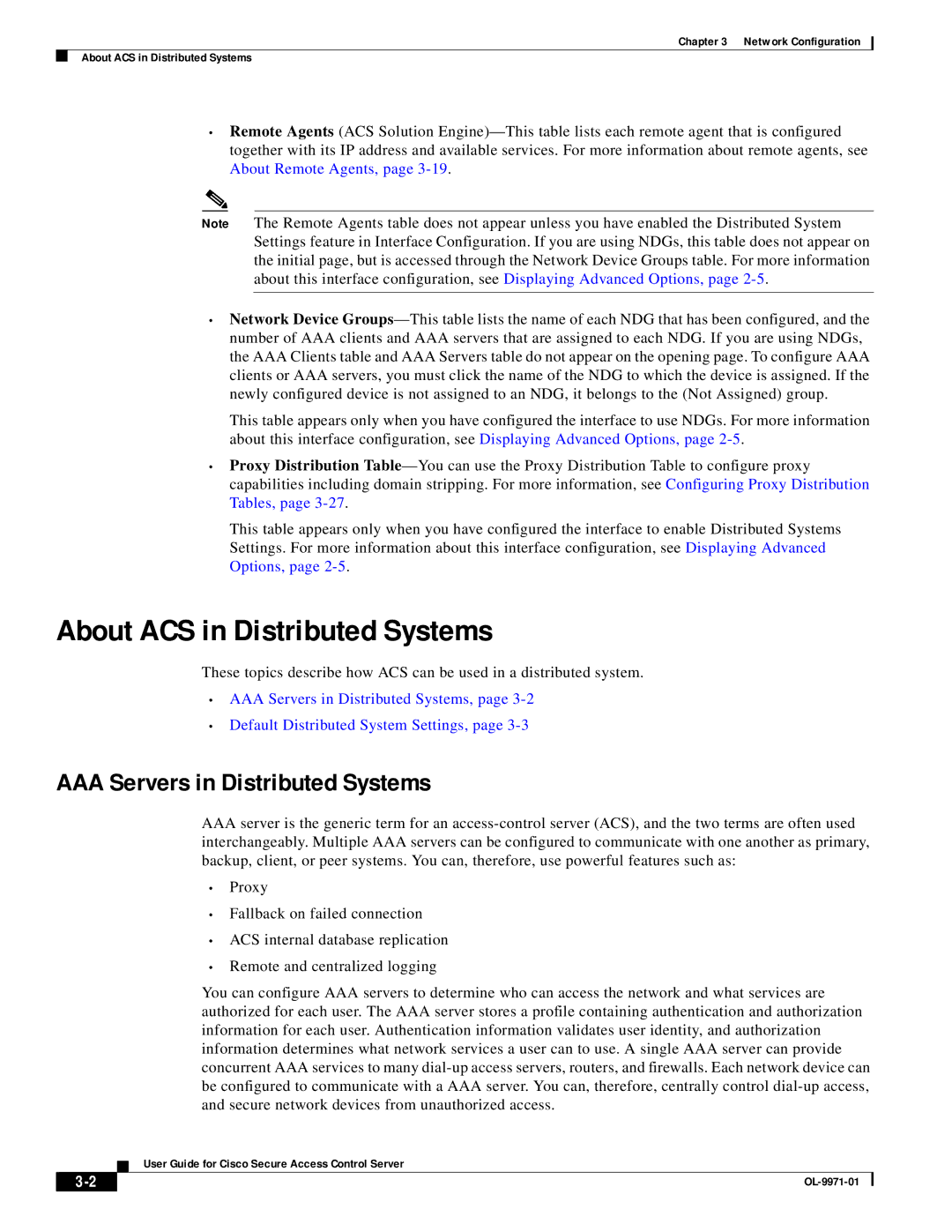
Chapter 3 Network Configuration
About ACS in Distributed Systems
•Remote Agents (ACS Solution
Note The Remote Agents table does not appear unless you have enabled the Distributed System Settings feature in Interface Configuration. If you are using NDGs, this table does not appear on the initial page, but is accessed through the Network Device Groups table. For more information about this interface configuration, see Displaying Advanced Options, page
•Network Device
This table appears only when you have configured the interface to use NDGs. For more information about this interface configuration, see Displaying Advanced Options, page
•Proxy Distribution
This table appears only when you have configured the interface to enable Distributed Systems Settings. For more information about this interface configuration, see Displaying Advanced Options, page
About ACS in Distributed Systems
These topics describe how ACS can be used in a distributed system.
•AAA Servers in Distributed Systems, page
•Default Distributed System Settings, page
AAAServers in Distributed Systems
AAAserver is the generic term for an
•Proxy
•Fallback on failed connection
•ACS internal database replication
•Remote and centralized logging
You can configure AAA servers to determine who can access the network and what services are authorized for each user. The AAA server stores a profile containing authentication and authorization information for each user. Authentication information validates user identity, and authorization information determines what network services a user can to use. A single AAA server can provide concurrent AAA services to many
User Guide for Cisco Secure Access Control Server
| ||
|
